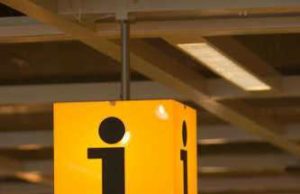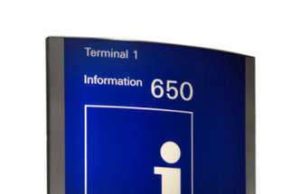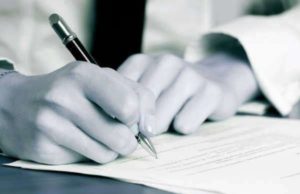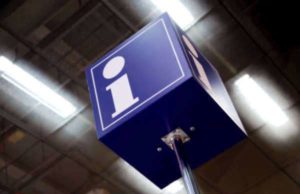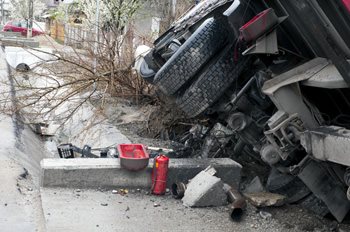
What to do in a Traffic Accident
Being involved in a car accident can be a scary and stressful experience. Even minor accidents can cause significant stress and confusion, but it’s essential to stay calm and take the necessary steps to ensure everyone’s safety and well-being. In this article, we will discuss what to do after a car accident to protect yourself, others involved, and your legal and financial interests.
1. Check for Injuries
The first step after a car accident is to check yourself and others involved in the accident for injuries. If there are any severe injuries, call 911 immediately. Do not move any injured persons unless it is necessary to prevent further harm.
2. Move to a Safe Location
If possible, move your vehicle to a safe location away from traffic and out of harm’s way. If the accident is minor, and the vehicle is operable, it is best to move it off the road and onto the shoulder or to a nearby parking lot. Leaving the vehicle in the middle of the roadway can cause further accidents and injuries.
3. Call the Police
Even if the accident is minor, it is always a good idea to call the police. The police can help document the scene, gather information, and file a report. The police report is essential when filing insurance claims and determining liability.
4. Exchange Information
Exchange information with the other driver involved in the accident, including their name, contact information, insurance information, and vehicle details. If there are any witnesses to the accident, ask for their contact information as well. Take pictures of the scene, including both vehicles involved, the damage, and the surroundings.
5. Contact Your Insurance Company
Notify your insurance company of the accident as soon as possible. Your insurance company will guide you through the process of filing a claim and can provide you with a list of documents that you will need to submit. Submitting your claim promptly can help speed up the process and allow you to receive compensation quickly.
6. Seek Medical Attention
Even if you do not think you have been injured, it is best to seek medical attention as soon as possible after an accident. Some injuries, such as whiplash, may not show up immediately but can cause severe pain and damage later on. Seeking medical attention can also provide you with documentation of any injuries sustained in the accident, which can be used as evidence when filing an insurance claim or legal case.
7. Document the Accident
Keep a record of everything related to the accident, including medical bills, police reports, repair estimates, and any other documentation. This record can help you negotiate with insurance companies and can also be used as evidence in a legal case.
8. Consult an Attorney
If you have been injured in an accident, it may be necessary to consult an attorney to help protect your legal and financial interests. An attorney can help you navigate the complex legal process and ensure that you receive the compensation you deserve.
Being involved in a car accident can be a traumatic experience, but knowing what to do after an accident can help protect yourself and others involved. Always prioritize safety and call for emergency services if necessary. Take pictures of the scene and document all details related to the accident. Notify your insurance company and seek medical attention, even if you do not think you have been injured. If an attorney is necessary, choose one with experience in personal injury law to give you the best chance of obtaining a favorable outcome in your case. By following these steps, you can help protect your legal and financial interests while ensuring that everyone involved in the accident receives the care they need.
Traffic accidents are a leading cause of injury and death around the world. While all vehicle accidents are dangerous, there are different types of car accidents that drivers should be aware of. In this article, we will discuss what traffic accidents are and explore different types of car accidents that drivers should be aware of.
What Are Traffic Accidents?
Traffic accidents occur when vehicles on the road collide with one another, causing damage to the vehicles and potentially injuring or killing the occupants. There are many different factors that can cause traffic accidents, including road conditions, driver error, and vehicle malfunction.
According to the National Highway Traffic Safety Administration (NHTSA), there were over 36,000 traffic fatalities in the United States in 2019. Some of the most common types of accidents that contribute to these fatalities are discussed below.
Different Types of Car Accidents for Drivers
1. Rear-End Collisions: Rear-end collisions are one of the most common types of car accidents, occurring when one vehicle collides with the back of another vehicle. This type of accident can be caused by a variety of factors, including driver distraction, following too closely, or sudden braking.
2. Side-Impact Collisions: Side-impact collisions, also known as T-bone crashes, occur when one vehicle collides with the side of another vehicle. This type of accident can be caused by turning without checking for oncoming traffic, running a red light, or failing to yield the right of way.
3. Head-On Collisions: Head-on collisions occur when two vehicles collide head-on, resulting in serious injuries and fatalities. This type of accident can be caused by driver distraction, driving under the influence of drugs or alcohol, or swerving to avoid an object in the road.
4. Rollover Accidents: Rollover accidents occur when a vehicle rolls over onto its roof or side. This type of accident is more common in SUVs and larger vehicles, and can be caused by excessive speeding, tire blowouts, or sudden maneuvers.
5. Single-Vehicle Accidents: Single-vehicle accidents occur when a vehicle collides with an object, such as a tree or guardrail, or overturns without another vehicle being involved. This type of accident can be caused by driver distraction, fatigue, or vehicle malfunction.
6. Multiple-Vehicle Pileups: Multiple-vehicle pileups occur when several vehicles collide with each other, often in a chain reaction. This type of accident can be caused by reduced visibility, bad weather conditions, or sudden stops on a highway.
7. Pedestrian Accidents: Pedestrian accidents occur when a vehicle collides with a pedestrian, resulting in serious injury or death. This type of accident can be caused by driver distraction, failing to yield to pedestrians at crosswalks, or driving under the influence of drugs or alcohol.
Conclusion
Traffic accidents are a serious issue that can result in injuries, death, and property damage. While all accidents are unpredictable, understanding the different types of car accidents and their causes can help drivers stay safe on the road. By following the rules of the road, maintaining their vehicles, and avoiding distractions while driving, drivers can help prevent accidents and keep themselves and others safe. It is also crucial to remember to seek legal and medical assistance in case of a crash.
____________________________
A traffic accident is classified as any accident involving motor vehicles, which results in an event that is considered to be in contrast of expected, intended, or routine operation. There exists a flawed definition of traffic accidents as accidents that occur on roadways, yet without the presence of a motor vehicle, these accidents are qualified alternatively – such as pedestrian or bicycle accidents. Although motorcycles and commercial vehicles can be classified within realms of individual legislation, accidents that involve motorized vehicles fall under the scope of traffic accidents.
Types of Traffic Accidents
While traffic accident is a broad term, it allows for the definitive classification of any accident involving a motor vehicle. For example, a car accident involving a driver operating a motor vehicle while intoxicated can be broadly classified as a traffic accident, yet specifically as a DUI accident or car accident.
1. Hit and Run: A hit and run accident is a type of traffic accident that involves contact between a motor vehicle and an additional entity, which can include a motor vehicle, pedestrian, and/or a stationary object. Eponymously, a hit and run traffic accident is classified as being one where any of the motor vehicle operators involved in the accident leaves the scene of the accident prior to legal processing. In the event of a traffic accident, individuals involved can choose to report the accident or handle the matter privately. However, unless the decision for recourse is unanimous, both law enforcement, as well as the insurance companies, will be involved.
Hit and run traffic accidents result in one or more individuals involved in the traffic accident engaging in unlawful conduct. Although the reasons for premature fleeing from the scene of a traffic accident vary, it is considered a serious offense and can render penalties including the loss of driving privileges, heavy fines, or jail time.
2. Driving Under the Influence (DUI) or Driving While Intoxicated (DWI): DUI or DWI is the unlawful operation of a motor vehicle while impaired by a substance. This can result in personal injury, property damage, or fatality. Impaired driving is a punishable offense that, unless proven innocent, results in heavy fines and a loss of license. The severity and frequency of the offense can contribute to jail time. Upon conviction, DUIs and DWIs are considered serious offenses that result in a criminal record.
3. Fender-Benders: “Fender-Benders” are considered to be the most common and least severe type of traffic accident. As the name suggests, these types of traffic accidents result in minor damage to one or both vehicles. These types of accidents include vehicle to vehicle contact at slowed or near-stopped speeds.
Traffic Accident Recourse
In the event of involvement in a traffic accident, an individual is encouraged to obtain documentation of all parties involved in the accident, as well as all documentation detailing the traffic accident. If an agreement cannot be made between the parties involved, an attorney specializing in traffic accidents can assist in the process of obtaining police reports, accident reports, witness testimony, and an assessment of damage and/or injury.
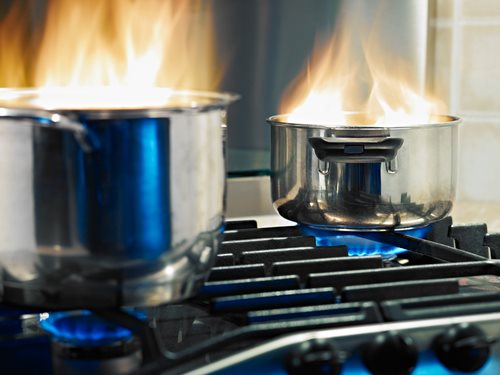




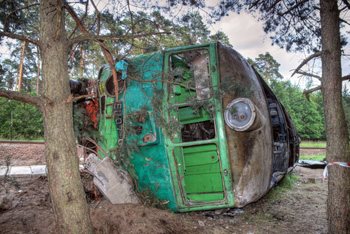 A train accident is classified as any accident that takes place involving a train, locomotive, subway, or other regulated vehicle designed to operate on a railway system. The fact that trains are confined to tracks allows for their use to be both some of the most direct means of transport, as well as some of the most complex. Unlike free-wheeled vehicle, such as a car or a bicycle, a train cannot rotate or alter the direction in which it travels. Yet, a train can alter the speed and velocity in which it travels, as well as move backwards or forwards.
A train accident is classified as any accident that takes place involving a train, locomotive, subway, or other regulated vehicle designed to operate on a railway system. The fact that trains are confined to tracks allows for their use to be both some of the most direct means of transport, as well as some of the most complex. Unlike free-wheeled vehicle, such as a car or a bicycle, a train cannot rotate or alter the direction in which it travels. Yet, a train can alter the speed and velocity in which it travels, as well as move backwards or forwards. 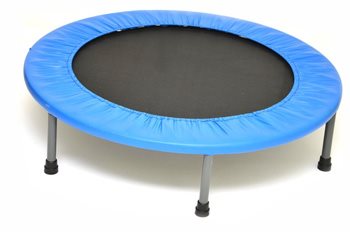
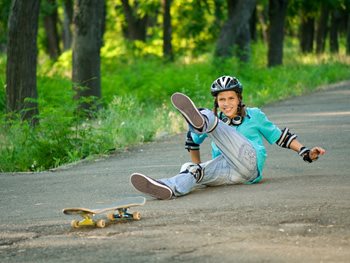 Skateboarding Accidents Lawyer
Skateboarding Accidents Lawyer Factors in Horse Accidents
Factors in Horse Accidents





